In the ever-evolving digital landscape, one innovation has emerged as a game-changer, capturing the imagination of technologists, artists, and marketers alike. This innovation is none other than Non-Fungible Tokens, or NFTs, a new form of digital asset that is redefining the boundaries of ownership and value in the virtual world.
NFT Marketing is a rapidly growing field that leverages the unique characteristics of NFTs to promote and sell digital assets. We understand that NFTs can be difficult to get your head around, but once you grasp the concept it will be easy to use them in your marketing.
The Emergence and Meteoric Rise of NFTs
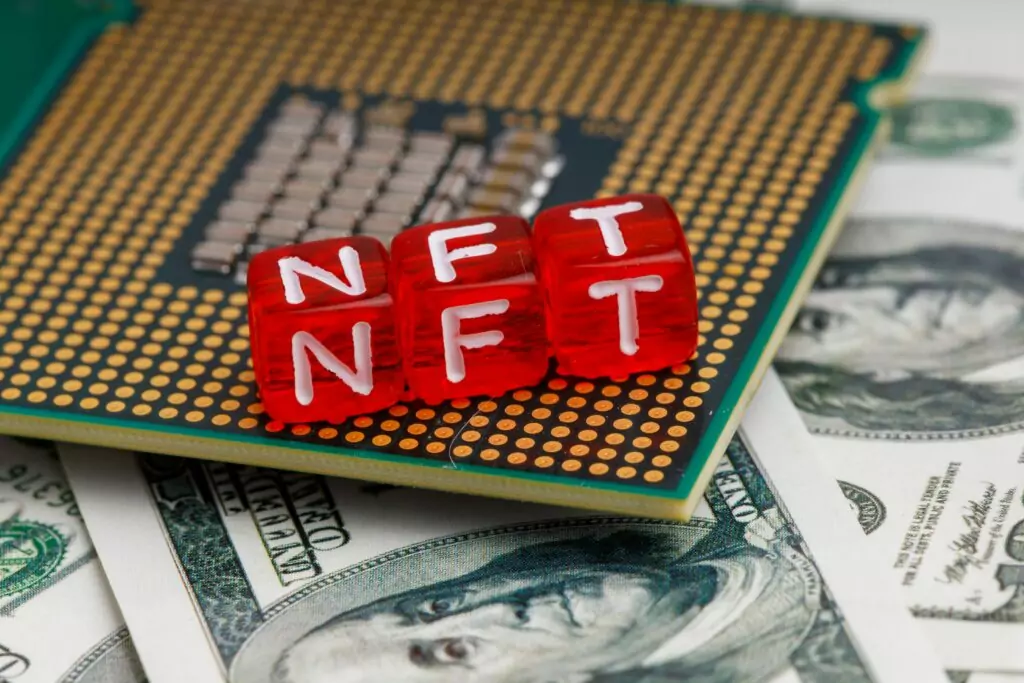

The rise of NFTs has been nothing short of meteoric. From digital art selling for millions of dollars to virtual real estate deals, NFTs have permeated various sectors. They’ve created a new digital economy that thrives on the principles of authenticity, ownership, and scarcity.
Transforming the Marketing Landscape
The impact of NFTs extends beyond just creating a new form of digital asset: they are transforming the very fabric of marketing in the digital era. In the traditional marketing landscape, brands and businesses have always grappled with the challenge of establishing a direct meaningful connection with their audience. The advent of NFTs, however, is turning this challenge on its head.
Empowering Brands and Opening New Avenues
By enabling a direct, transparent, and immutable record of ownership, NFTs are empowering brands to create a new kind of relationship with their target consumer. The relationship is now based on mutual value exchange rather than one-way communication.
Moreover, NFTs are establishing new pathways for creativity and innovation in marketing. From branded NFT releases and virtual merchandise to NFT-based loyalty programs and community engagement initiatives, the possibilities are endless and only limited by one’s imagination.
A Paradigm Shift in Marketing
NFTs are transforming how brands connect with their audience, representing a major change of course in the marketing landscape. They have changed how value is perceived and exchanged, and even the expression (and reward) of creativity in the digital era.
As we delve deeper into this guide, I will explore the world of NFT marketing in detail. Together, we will uncover its potential, and challenges, and explore predictions of its future. So, buckle up and get ready to embark on an exciting journey into the world of NFT marketing.
Demystifying NFTs: A Closer Look
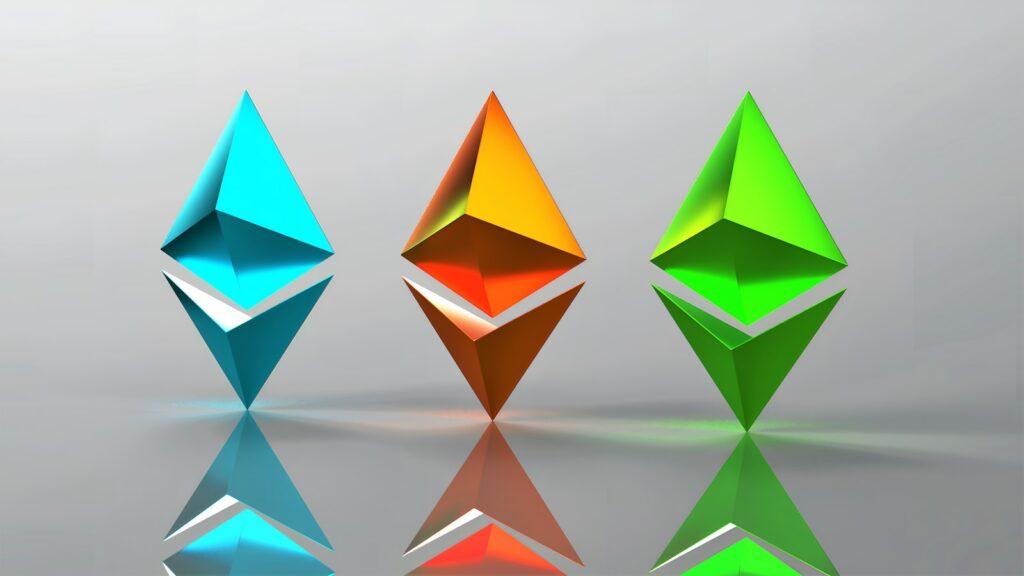

Before I get into the various ways this new technology can be used in marketing, it’s good to go over the basics–just to ensure we’re all on the same page.
Understanding the Basics About NFTs
As mentioned earlier, NFTs are Non-Fungible Tokens, which means they are a type of digital asset that exists on a blockchain. The same technology is used in cryptocurrencies such as Bitcoin, Ethereum, or the infamous Dogecoin.
However, unlike these cryptocurrencies, NFTs are unique in that each represents a distinct item or piece of content. Think of them as digital art that is ‘protected’ by blockchain technology from being replicated.
Also, the concept of NFTs is rooted in the idea of “non-fungibility”, which basically means that each token is unique and cannot be replaced with something else. This is in contrast to “fungible” assets like Bitcoin or traditional currencies, where each unit is identical to every other unit.
NFTs are created (rather, “minted”), on a blockchain. This is a decentralized and distributed digital ledger that records transactions across many computers. The point of minting NFTs on a blockchain is to ensure the security and immutability of the NFTs, as the record of ownership cannot be altered or deleted.
When an NFT is minted, it is assigned a unique identifier and metadata, which include information such as
- The asset’s name
- A description of the asset
- Identity of the owner.
The information is stored on the blockchain and can be verified by anyone. This ensured the authenticity and source of the NFT.
Unique Characteristics to Consider
NFTs possess several unique characteristics that set them apart from other digital assets. These include:
- Uniqueness: Each NFT is unique and cannot be replaced. This uniqueness is verified by the blockchain as specific attributes and ownership details and recorded for each unit.
- Indivisibility: Unlike cryptocurrencies which can be divided into smaller units (Example: Bitcoin can be divided into satoshis), NFTs cannot be divided. They are bought, sold, and owned in whole units. Dividing and NFT would be like tearing up pieces of a valuable painting such as the Mona Lisa.
- Ownership rights: Owning an NFT signifies ownership of a unique piece of material. While the content may be copied or shared (such as a screenshot, or a music file), the NFT represents the ownership of the original work.
- Interoperability: NFTs are typically built on standard protocols, much like Ethereum’s ERC-721 and ERC-1155. This means that they can be traded and transferred across different platforms that support these standards.
- Provenance and Authenticity: The blockchain records the entire history of an NFT. The history includes its creation, ownership changes, and sales history. This provides a transparent and verifiable proof of authenticity and shows the true source of the NFT.
- Programmability: NFTs can have programmable features and smart contracts embedded in them. This means they can be made to perform certain functions or trigger specific actions on the blockchain.
As you can see, NFTs are a revolution that the marketing landscape is experiencing whether we like it or not. They represent a significant advancement in how ownership is conceived in the digital world, and how it is valued. There is an immense potential for using them in a wide range of applications, including the realm of marketing.
The Power of NFT Marketing: Key Benefits
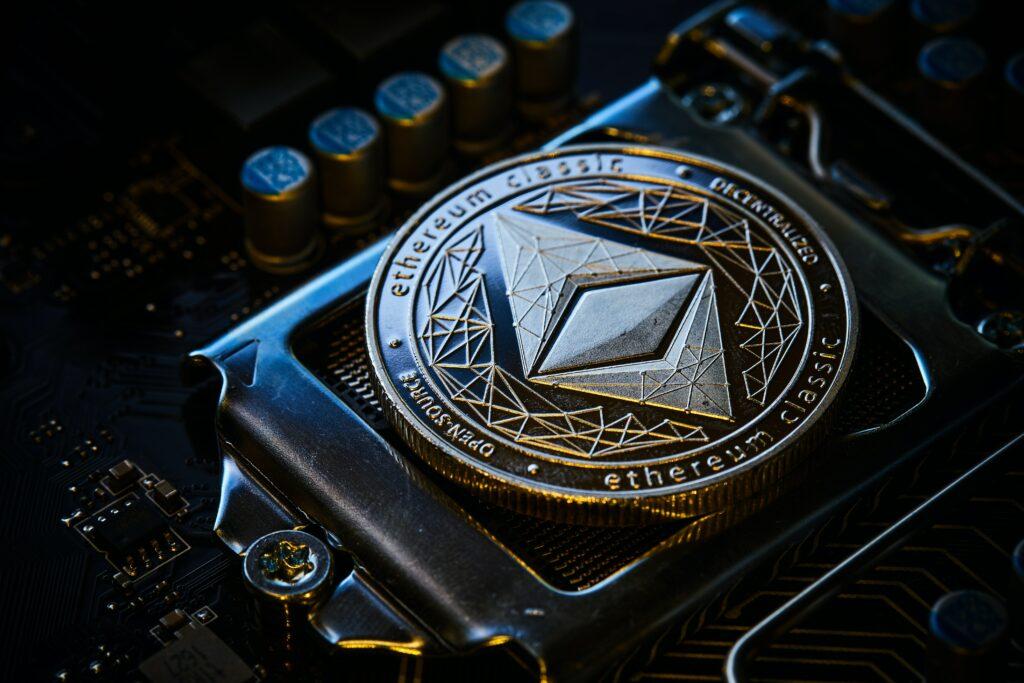

To further understand the reasons behind the increasingly popular use of this technology in marketing, let’s take a look at its key benefits:
Unlocking Direct Audience Connection
One of the most significant benefits of NFT marketing lies in its ability to foster a direct connection between brands and their audience. Unlike traditional digital assets, NFTs are owned by a specific individual. This ownership creates direct links between the brand and the owner, enabling a level of engagement and personalization that is unparalleled in traditional marketing channels.
Innovative Revenue Streams
NFTs also open up new and innovative revenue streams for brands. By tokenizing digital content, brands can monetize their assets in ways that were not previously possible. This could include:
- Selling digital art
- Virtual merchandise
- NFT experiences
Furthermore, the programmability of NFTs allows for the creation of “smart” assets that can generate ongoing revenue. For example, an NFT can be programmed to pay a royalty to the original creator everytime it is resold.
Enhanced Community Engagement
By offering exclusive content or experiences as NFTs, brands can incentivize engagement and foster a sense of community among their audience. This could include:
- Exclusive access to content
- Special privileges within a community
- The ability to influence decisions or the direction of a project.
Transparency and Trust
The blockchain provides a level of trust and security that is highly beneficial in marketing, due to its transparency and immutability. The provenance and authenticity of an NFT can easily be verified on the blockchain, providing reassurance to consumers about the legitimacy of the asset. This transparency can also extend to the brand’s operations, helping build trust and credibility with the audience.
NFT Marketing in Action: Real-World Success Stories
Let’s take a look at success stories that show how brands have been able to leverage NFTs to attract a wider audience, drive sales, and create lasting brand identities.
Case Study: NBA Top Shot


A prime example of the power of NFT marketing is NBA Top Shot, a block-chain based platform that allows fans to buy, sell, and trade officially licensed NBA collectibles, known as “Moments”. These are essentially NFTs that represent significant in-game highlights.
NBA Top Shot has successfully leveraged the benefits of this new technology to create a new and innovative engagement platform. By tokenizing the game highlights, they have created a direct connection with their fans as it allows the fans to own a piece of the game they love. This “ownership” to the fan is much like owning a signed baseball from a major baseball player. Some might compare it to buying a baseball card.
The platform has also fostered a strong sense of community among fans. Users are actively trading and discussing Moments. Furthermore, the transparency of the blockchain ensures that every transaction is secure and that the authenticity and ownership of each Moment is verifiable.
Within the first year, NBA Top Shot generated over 0 million in sales. This success story serves as a powerful example of how NFTs can transform marketing and fan engagement in the digital era, using the right strategy.
Nike’s Metaverse and Collector Mentality


Nike, the global footwear and apparel giant, has made significant strides in the NFT space by marrying the metaverse concept with its customers’ collector mentality. The company expanded its digital footprint for NFTs by acquiring RTFKT, a virtual sneaker company.
Nike uses NFTs with their sneakers to create ownership proof and expand their customer base. The “Ducks of a Feather” NFT, paired with Nike Air Max 3 shoes, appealed to a wider audience and increased customer engagement and brand loyalty. This innovative strategy merges tangible products with the digital world.
Beeple’s Digital Art Revolution


In the world of digital art, no name has become more synonymous with the NFT revolution than Beeple. It’s the pseudonym of artist Mike Winkelman. In March 2021, he made headlines when his digital artwork, “Everydays: The First 5000 Days”, sold as an NFT for a staggering $69 million at Christie’s auction house.
The sale catapulted Beeple into the mainstream art world and solidified NFTs as a legitimate medium for artistic expression. In fact, the sale not only marked the highest price ever paid for an NFT (at that time) but it also positioned Beeple among the top three most valuable living artists.
Beeple’s success story is a testament to the power of NFTs in democratizing the art world. By tokenizing his digital art, Beeple was able to bypass the traditional gatekeepers. He also reached a global audience and monetized his work in a way that was not previously possible.
Kings of Leon: Music NFTs


In the music industry, the band Kings of Leon became the first to release an album as an NFT. Their album, “When You See Yourself” was released in March 2021. They offered three types of NFTs:
- A special album package
- An NFT offering live show perks like front-row seats for life
- A type of NFT offering exclusive audiovisual art.
The band’s innovative approach to NFTs opened up new possibilities for the music industry, creating a new way for artists to connect with fans and monetize their work. It also set a precedent for other musicians, with artists like Grimes and Snoop Dogg following suit.
Crypto Kitties: NFT Gaming
A blockchain-based virtual game developed by Axiom Zen, Crypto Kitties is another pioneering example of NFT marketing in action. Launched in 2017, Crypto Kitties allows players to purchase, collect, breed, and sell virtual cats, each represented as an NFT.
The platform quickly gained popularity, with some kitties selling for over $100,000. The game’s success lies in its innovative use of NFTs to create a unique and engaging user experience. Each CryptoKitty is unique, with its own set of “cattributes” and ownership recorded on a blockchain. This creates a sense of ownership and attachment among players.
More NFT Marketing Success Stories
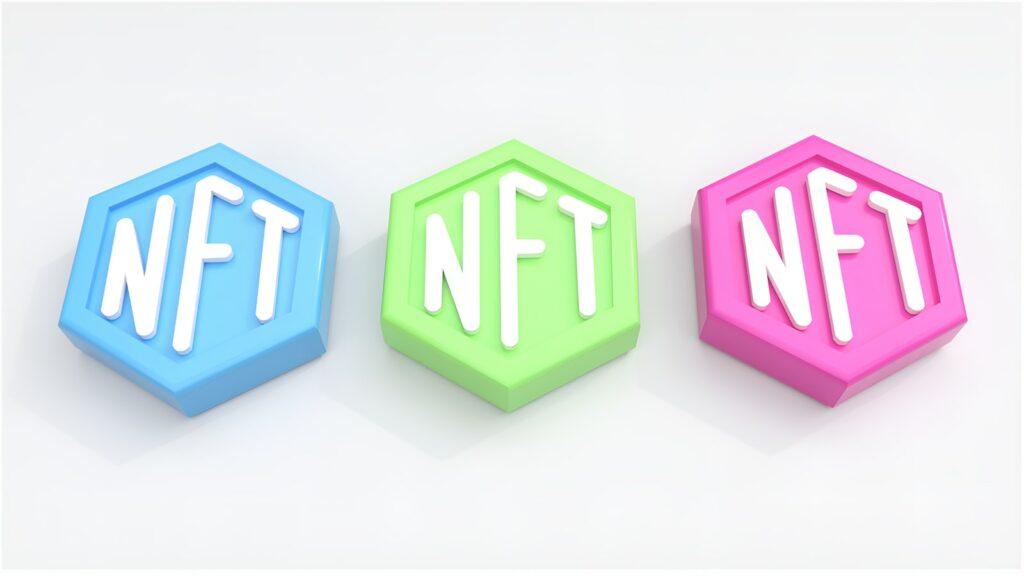

Here are more examples of the successful use of NFTs in the realm of marketing:
Taco Bell sold digital taco artwork NFTs, raising $200,000 for charity and encouraging the use of NFTs in supporting artists.
Art Blocks is a platform for generative art NFTs, created using algorithms instead of direct human intervention. This unique form of art attracts collectors who value the creativity and diversity of these unpredictable NFTs.
Hot Wheels combined physical cars with digital NFTs in their marketing, connecting consumers to the brand and boosting the campaign’s success. This shows the potential of pairing digital assets with tangible products.
World of Women’s Inclusive Vision: This collection of 10,000 NFTs by Yam Karkai celebrates diversity, inclusivity, and equal opportunities. NFT holders support emerging women artists, sustainability-focused organizations, and educate under-represented minorities. The marketing campaign has gained recognition from Christie’s, The New Yorker, and OpenSea.
VeeFriends, by Gary Vaynerchuk, offers NFT holders convention tickets and collectible NFTs. It creates a strong community of buyers and turns internet esteem into valuable digital assets.
Bud Light released NFTs alongside their new product, offering buyers exclusive benefits. The tokens sold out before the Super Bowl, making $4.5 million. This increased interest in the beer and the NFT market.
Adidas collaborated with NFT holders, offering exclusive physical items and virtual experiences in the Metaverse. This campaign demonstrated the power of brand, artist, and community collaborations, attracting a diverse audience and expanding Adidas’ NFT presence.
Essential Elements and Strategies for NFT Marketing
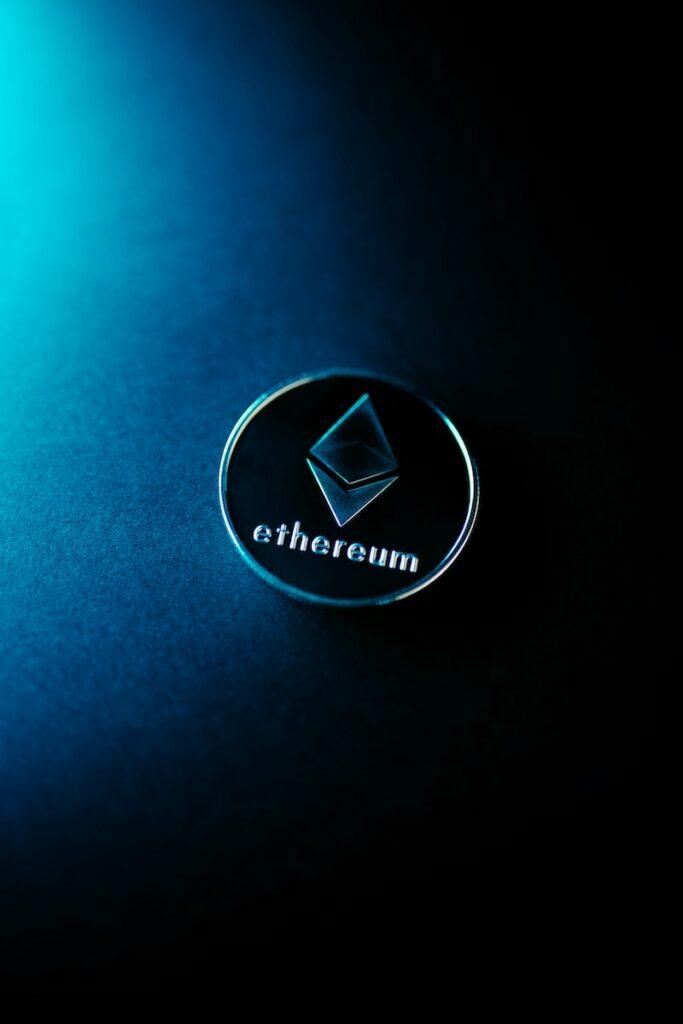

To effectively incorporate NFTs into marketing strategies, several key elements should be considered.
NFT Advertising
NFT advertising involves leveraging NFTs as a medium to promote products or services. Brands can create NFTs that serve as advertisements, showcasing their offerings and driving awareness. NFT advertising can be embedded within digital art, virtual worlds, or even social media platforms. This allows marketers to reach a wide audience and create interactive experiences for them.
NFT Branding
NFT branding involves using NFTs to reinforce and enhance a brand’s image and identity. Brands can create NFTs that represent their values, culture, or iconic symbols. These branded NFTs can be used for promotional purposes, giveaways, or as part of loyalty programs. Smart marketing specialists are able to use them for strengthening the connection between the brand and its customers.
NFT Promotion
NFT promotion refers to the act of using NFTs to promote specific marketing campaigns or events. Brands can create NFTs that provide access to exclusive content, events, or experiences. NFT promotions can drive engagement, generate buzz, and attract a dedicated community of fans and collectors.
NFT Strategies
Developing effective NFT marketing strategies involves careful planning and consideration. Brands must determine their objectives, target audience, and the type of NFTs that align with their brand identity. They should also explore partnerships with artists or platforms, ensuring a seamless integration of NFTs into their marketing efforts.
Navigating the NFT Market: Challenges and Opportunities


NFT marketing has great potential but faces challenges due to the evolving NFT market. Brands must navigate blockchain, IP rights, market volatility, and address environmental concerns.
However, despite the challenges, NFT marketing presents several exciting opportunities. It enables brands to tap into new revenue streams by monetizing digital assets and engaging directly with their audience. NFTs can also foster community-building and facilitate direct interaction between brands and consumers. The decentralized nature of NFTs ensures transparency and authenticity, mitigating issues like counterfeiting and fraud.
NFTs are a game-changer for brands, allowing them to engage with audiences and build connections. Brands must understand the technology and approach it strategically to unlock creativity, revenue, and loyalty.
Justin Bieber and the Bored Ape: A Pop Culture Phenomenon


Celebrity Justin Bieber made headlines by buying a Bored Ape NFT for $1.3 million, greatly increasing its value.
However, the tale of Bieber’s Bored Ape took a dramatic turn. Despite the initial hype and the skyrocketing price, the value of Bieber’s Bored Ape NFT plummeted by 95% within a year. This drastic drop in value serves as a stark reminder of the volatility and unpredictability inherent in the NFT market.
Despite Bieber’s financial loss, his involvement in NFTs, specifically BoredApes, hugely boosted their visibility and mainstream adoption. By introducing the concept to his millions of followers, many who were unfamiliar with NFTs, he solidified their status as a new frontier in the digital realm, offering fresh marketing and brand engagement opportunities.
Measuring Success in NFT Marketing: Metrics and Data Analysis
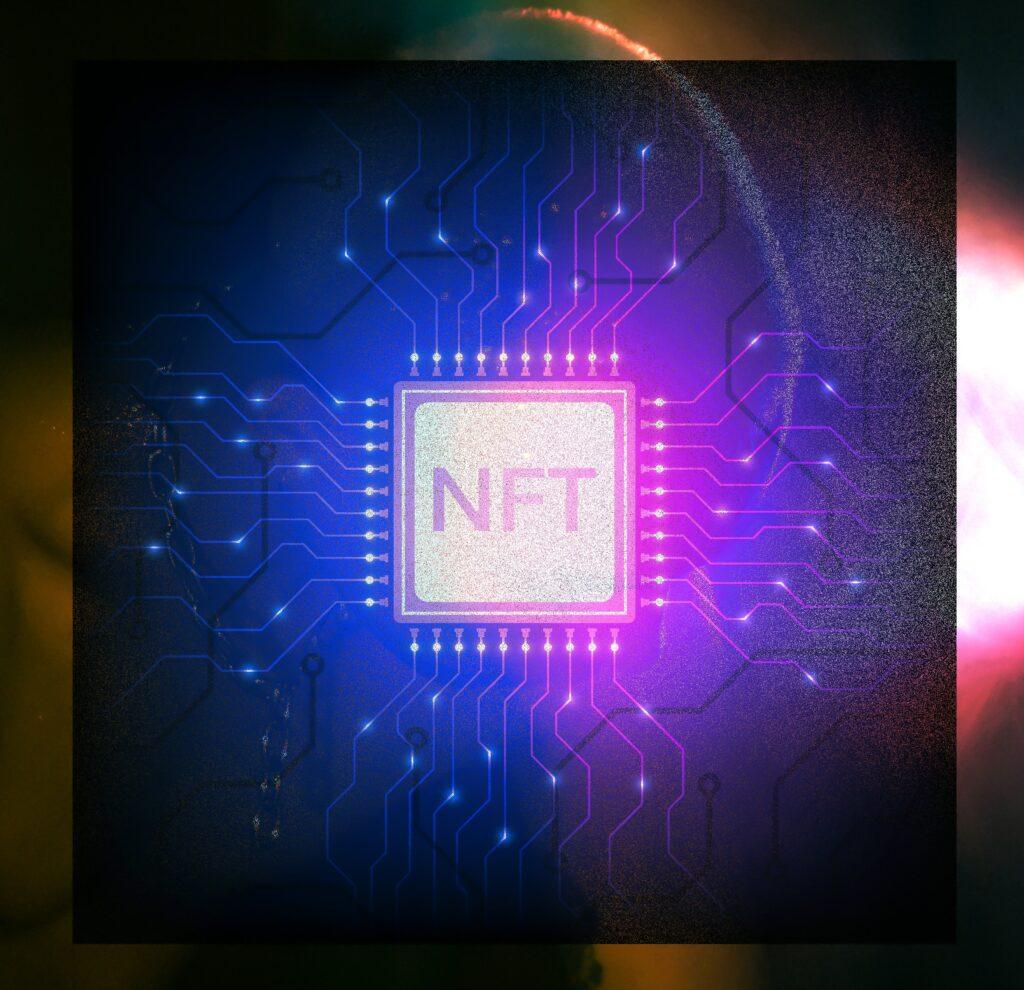

Understanding and interpreting the data generated from NFT marketing campaigns is crucial for measuring success, identifying areas for improvement, and making data-driven decisions. The section will cover the following topics:
- Tracking NFT Marketing Metrics: Explore the key performance indicators (KPIs) specific to NFT marketing, such as conversion rates, engagement metrics, sales volume, secondary market activity, and more. We will discuss how to effectively track and analyze these metrics to gauge the performance of NFT marketing campaigns.
- Utilizing Analytics Tools: Introduce various tools and platforms that can assist in analyzing NFT marketing data. These tools can provide insights into user behavior, market trends, and audience demographics, and help identify patterns or opportunities for optimization.
- Interpreting NFT Interest Charts: Explain how to interpret NFT interest charts and graphs to gain a better understanding of market trends, demand fluctuations, and the overall popularity of specific NFT projects. We will discuss strategies for leveraging this information to inform marketing decisions.
- Identifying Successful NFT Projects: Explore methods for identifying the most successful NFT projects based on metrics and data analysis. We will discuss the factors that contribute to the success of an NFT project and how marketers can apply those insights to their own campaigns.
Crafting an Effective NFT Marketing Strategy: Step-by-Step Guide
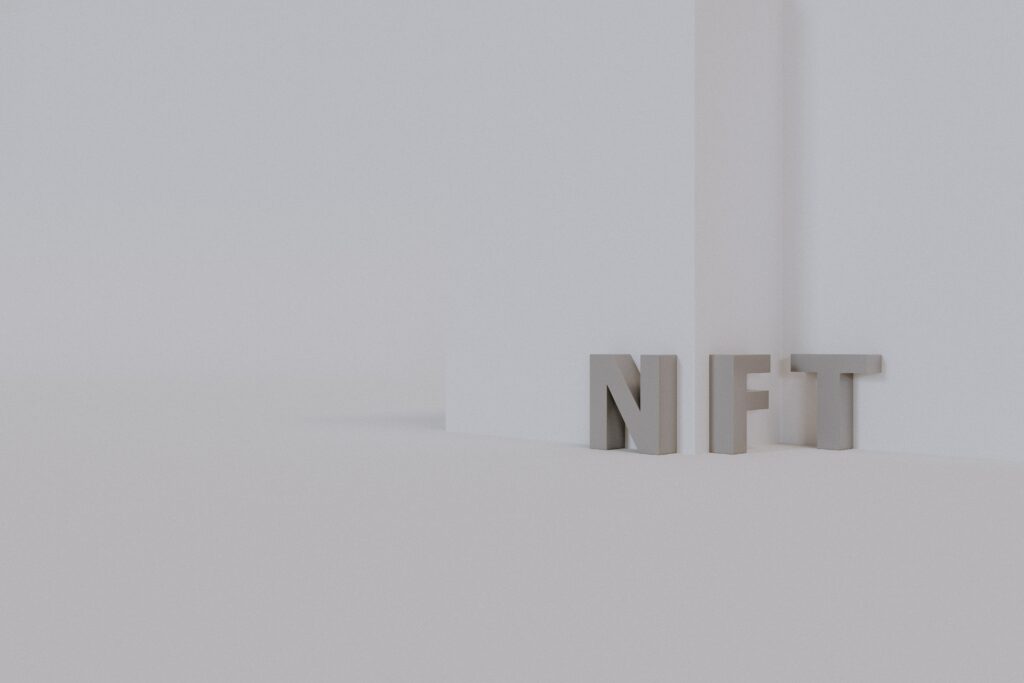

By carefully planning your approach, you can effectively navigate the dynamic NFT landscape and create impactful campaigns that resonate with your target audience.
Setting Clear Objectives for NFT Marketing
In the fast-paced world of NFT marketing, setting clear objectives is paramount to ensure your efforts align with your overall marketing goals. By defining specific objectives, you can measure the success of your NFT initiatives, track progress, and make informed decisions to optimize your campaigns. Here are key considerations when setting objectives for NFT marketing:
- Audience Engagement: NFTs provide a range of interactive and immersive experiences. Setting an objective to enhance audience engagement involves creating NFTs that encourage active participation, collaboration, and community building. Explore how your NFTs can inspire your audience to engage with your brand, share their experiences, and become enthusiastic advocates for your NFT offerings.
- Revenue Generation: NFTs have emerged as a lucrative market, and generating revenue through NFT sales can be a viable objective. Determine how NFTs can be monetized within your marketing strategy, whether through limited editions, exclusive content, or partnerships with collectors. Establish a pricing strategy and explore avenues such as auctions, secondary market royalties, or collaborations with established NFT platforms.
- Customer Loyalty and Retention: NFTs present an opportunity to reward and engage loyal customers. Setting an objective to enhance customer loyalty and retention through NFT marketing involves creating exclusive NFTs or experiences for your most dedicated customers. Consider how NFTs can be integrated into loyalty programs, gamification elements, or incentives for repeat purchases.
- Partnerships and Collaborations: NFTs offer a platform for collaboration with artists, influencers, and other brands. Setting an objective to build partnerships and collaborations through NFT marketing can expand your reach, tap into new audiences, and leverage the creative expertise of others. Explore opportunities to collaborate on NFT launches, co-branded collections, or joint marketing campaigns to maximize impact.
When setting objectives for NFT marketing, ensure they are specific, measurable, achievable, relevant, and time-bound (SMART). Establish key performance indicators (KPIs) to track the progress and success of your NFT campaigns, such as the number of NFT sales, social media engagement, or growth in brand mentions.
Identifying Target Audience for NFTs


To effectively market NFTs, it is essential to identify and understand your target audience. By defining your target audience, you can tailor your NFT offerings, messaging, and distribution channels to effectively reach and engage the right individuals. Here are key steps to help you identify your target audience for NFTs:
- Analyze Existing Customer Data: Begin by analyzing your existing customer data to gain insights into the demographics, preferences, and behaviors of your current customer base. Look for patterns and trends that can guide your understanding of who is most likely to be interested in NFTs related to your brand or industry. Consider factors such as age, location, interests, and buying habits.
- Conduct Market Research: Conduct thorough market research to identify potential segments within the broader market that align with your brand and NFT offerings. This can involve surveys, focus groups, or online research to gather data on consumer preferences, trends, and attitudes toward NFTs. Look for common characteristics or interests that can help you define your target audience.
- Consider Niche Communities: NFTs often attract specific niche communities and subcultures. Identify these communities that align with your brand values or content themes. Dive into online forums, social media groups, or platforms dedicated to these communities to gain insights into their interests, preferences, and engagement with NFTs. Understanding these communities will help you tailor your NFT offerings to resonate with their unique interests and motivations.
- Explore Competitive Landscape: Analyze your competitors’ NFT marketing efforts and the audiences they are targeting. Identify gaps or opportunities that you can leverage to differentiate your brand and attract a specific target audience. Look for underserved or untapped segments within the NFT market and determine how you can position your offerings to appeal to these audiences.
- Test and Refine: Once you have identified your target audience, validate your assumptions and refine your understanding through testing and experimentation. Launch pilot NFT campaigns targeting specific segments of your audience and closely monitor the response, engagement, and sales metrics. Use the feedback and data gathered to fine-tune your approach and optimize your messaging and offerings.
Remember that the target audience for NFTs may differ from your traditional customer base. NFTs often attract early technology adopters, crypto enthusiasts, collectors, and fans of digital art or specific industries. Stay informed about emerging trends, changes in consumer behavior, and evolving NFT communities to ensure your targeting remains relevant and effective.
Creating an NFT Marketing Plan
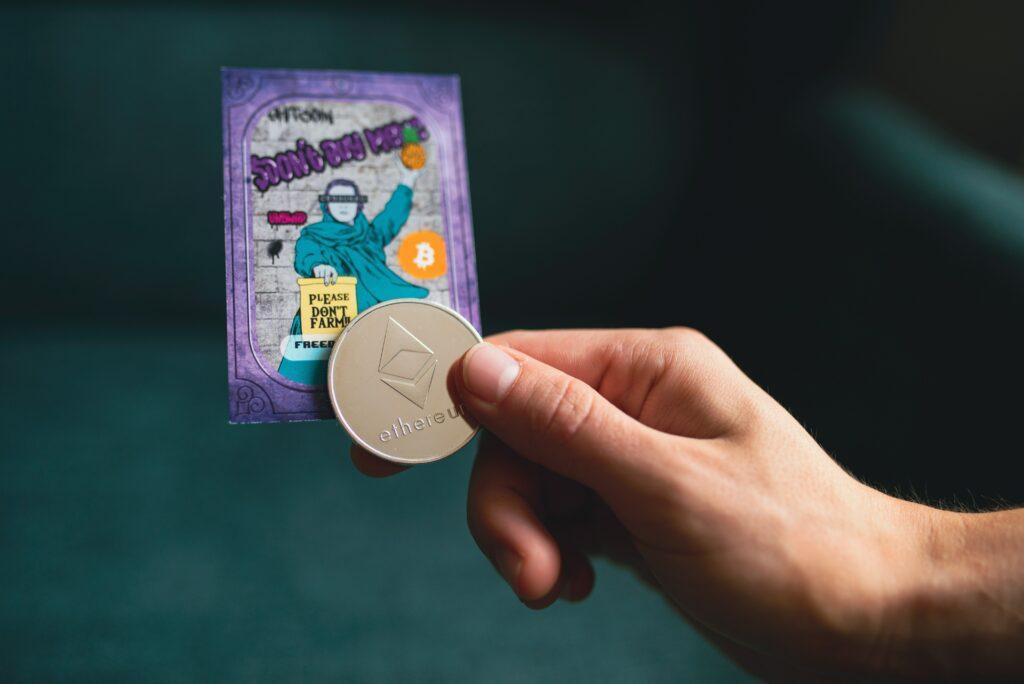

Developing a comprehensive marketing plan is essential for successfully navigating the world of NFTs. By strategically outlining your goals, tactics, and resources, you can effectively promote your NFTs, engage your target audience, and achieve measurable results. Let’s explore the key elements of creating an impactful NFT marketing plan.
1. Choosing the Right NFT Platforms
When developing an NFT marketing plan, selecting the right platforms to showcase and sell your NFTs is crucial. Different platforms cater to different audiences, possess unique features, and offer various marketing tools. Consider the following factors when choosing NFT platforms:
- Audience Reach: Evaluate the platform’s user base and reach. Look for platforms with a large and active community that aligns with your target audience. Popular platforms like OpenSea, Rarible, or SuperRare often provide greater exposure and potential for sales.
- Niche Alignment: Identify platforms that cater to your specific niche or industry. Some platforms specialize in digital art, gaming, or collectibles, attracting audiences with particular interests. By choosing platforms that align with your NFT offerings, you can target a more receptive audience.
- Platform Features: Evaluate the features and tools offered by each platform. Consider aspects such as ease of use, customization options, analytics, and promotional capabilities. Look for platforms that provide robust marketing tools, allowing you to effectively showcase your NFTs and engage potential buyers.
- Security and Reputation: Research the platform’s reputation and security measures. Ensure they have a track record of protecting artists’ and collectors’ rights, preventing counterfeiting, and facilitating secure transactions. Consider user reviews and feedback from other NFT creators to make an informed decision.
2. Crafting Compelling NFT Descriptions and Titles


Crafting compelling descriptions and titles for your NFTs is essential for capturing the attention of potential buyers and conveying the value and uniqueness of your digital assets. Consider the following tips when creating NFT descriptions and titles:
- Unique Selling Points: Clearly highlight the distinctive features, rarity, or exclusivity of your NFTs. Communicate what makes them special and sets them apart from other offerings in the market. Emphasize any limited editions, unique experiences, or collaborations involved.
- Storytelling: Engage potential buyers by sharing the story, inspiration, or concept behind your NFTs. Create an emotional connection and intrigue by providing insights into the creation process, the artist’s vision, or the narrative behind the artwork. A compelling story can enhance the perceived value of your NFTs.
- Descriptive Language: Use descriptive language to paint a vivid picture of your NFTs. Highlight specific details, colors, textures, or symbolism within the artwork. Describe the emotions or experiences that viewers may encounter when engaging with your NFTs.
- Keywords and Tags: Incorporate relevant keywords and tags in your descriptions to optimize discoverability. Think about the search terms or categories that your target audience may use when looking for NFTs similar to yours. This will help potential buyers find your NFTs more easily.
- Catchy Titles: Create catchy and memorable titles that reflect the essence of your NFTs. Titles should be concise, attention-grabbing, and aligned with the artwork or concept. Consider using wordplay, metaphors, or cultural references that resonate with your target audience.
3. Pricing Strategies for NFTs
Determining the right pricing strategy for your NFTs is essential for attracting buyers and optimizing revenue generation. Consider the following pricing strategies when setting the value for your NFTs:
- Market Research: Conduct market research to understand the pricing trends and ranges within your niche. Analyze the sales history, demand, and perceived value of similar NFTs. This research will help you position your NFTs competitively in the market.
- Scarcity and Exclusivity: Leverage scarcity and exclusivity to justify higher prices. Limited editions, rare collectibles, or unique experiences can command premium pricing. Create a sense of urgency by clearly communicating the limited availability of your NFTs.
- Starting with a Lower Price: If you are new to the NFT market or building your reputation, consider starting with a lower price point to attract initial buyers. This strategy can help you gain traction, build a following, and generate buzz around your offerings.
- Dynamic Pricing: Explore dynamic pricing strategies where the price of your NFTs can change based on factors such as demand, time, or resale value. This approach can create a sense of urgency and incentivize early buyers.
- Bundling and Tiered Pricing: Consider offering bundles or tiered pricing options to cater to different buyer preferences. Package multiple NFTs together or offer different levels of access or benefits at varying price points. This strategy allows you to appeal to a broader range of buyers and maximize revenue potential.
Leveraging Social Media for NFT Marketing
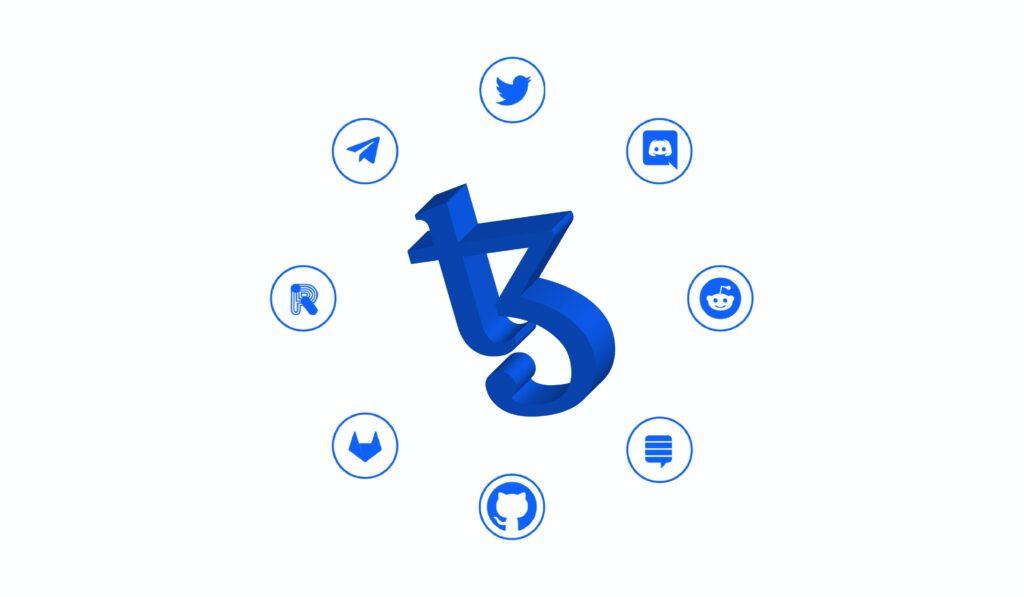

Social media has become an integral part of marketing strategies, and when it comes to NFTs, it offers a powerful platform for promotion, engagement, and community building. By effectively leveraging social media, you can amplify the reach of your NFT marketing efforts and connect with your target audience. Let’s explore how you can utilize social media for NFT marketing.
Promoting NFTs on Social Media Platforms
Social media platforms provide an excellent opportunity to promote your NFTs and generate awareness. Share captivating visuals and engaging content related to your NFT offerings on platforms like Twitter, Instagram, and TikTok. Create eye-catching posts that highlight the uniqueness and value of your NFTs. Consider using multimedia formats such as images, videos, and GIFs to capture attention and encourage sharing.
Utilize relevant hashtags, keywords, and mentions to increase the discoverability of your NFT content. Engage with your followers, respond to comments, and encourage discussions about your NFTs. Leverage the power of social media advertising to target specific demographics, interests, or communities that align with your NFT offerings.
Engaging with NFT Community and Influencers
Engaging with the NFT community and influencers can significantly enhance your NFT marketing efforts. Join relevant NFT groups, forums, and communities to participate in discussions, share insights, and establish your expertise. Actively engage with influencers in the NFT space by mentioning them, collaborating on NFT launches, or featuring their work.
Build relationships with influential NFT creators, collectors, and enthusiasts. Collaborate on joint marketing campaigns or giveaways to tap into their audience and expand your reach. Encourage user-generated content by running contests or challenges that involve creating and sharing NFT-related content.
Using NFT-Specific Social Media Strategies
NFT marketing requires unique strategies tailored to the characteristics of the NFT market. Consider the following approaches to maximize your impact on social media:
- Create Behind-the-Scenes Content: Offer your audience a glimpse into the creation process or the story behind your NFTs. Share progress updates, artist insights, or exclusive content related to the development of your NFTs. This behind-the-scenes content can build anticipation, intrigue, and a deeper connection with your audience.
- Limited-Time Offers and Exclusivity: Leverage the concept of scarcity and exclusivity by offering limited-time promotions, exclusive access, or early bird discounts to your social media followers. This strategy creates a sense of urgency, encourages immediate action, and rewards your most engaged audience.
- Cross-Promotion with Influencers: Collaborate with influencers in the NFT space to cross-promote each other’s content and NFT offerings. This strategy allows you to tap into their established audience and gain credibility through their endorsement.
- NFT Giveaways and Airdrops: Run NFT giveaways or airdrops on social media platforms to incentivize engagement and attract new followers. Encourage users to follow, share, or participate in specific actions to be eligible for the giveaway. This strategy can help you expand your social media reach and create buzz around your NFTs.
Collaborations and Partnerships in NFT Marketing
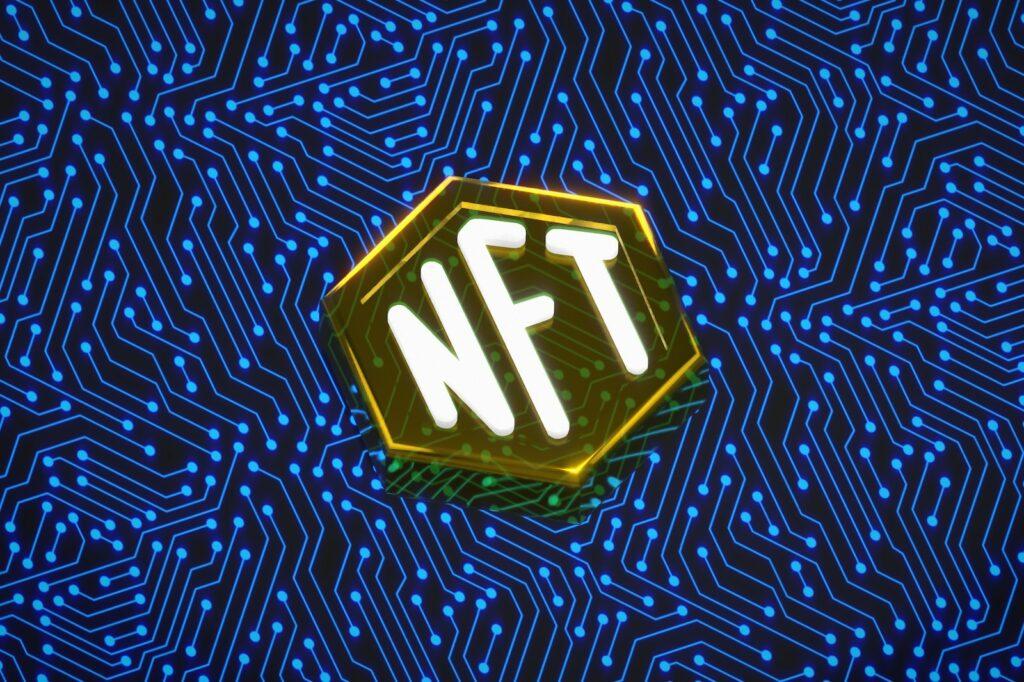

In the world of NFT marketing, collaborations and partnerships play a vital role in driving engagement, expanding reach, and creating unique experiences for both brands and consumers. By joining forces with artists, influencers, and other brands, you can leverage their creativity, influence, and networks to amplify the impact of your NFT marketing efforts. Let’s explore the benefits and strategies of collaborations and partnerships in NFT marketing.
Enhancing Creativity and Innovation
Collaborating with artists and creators allows you to tap into their unique talents, perspectives, and aesthetics. By partnering with renowned or emerging artists, you can infuse their creativity into your NFT offerings, making them more visually appealing and culturally relevant. Collaborations with artists also bring fresh ideas and innovative concepts, pushing the boundaries of what is possible in the NFT space.
Expanding Reach and Building Audiences
Partnerships with influencers and established brands provide opportunities to tap into their dedicated fan bases and customer networks. Influencers can help promote your NFTs to their followers, generating buzz and increasing exposure.
Collaborating with brands that share your target audience but offer complementary products or services can expose your NFTs to new markets and expand your reach.
Creating Unique Experiences
Collaborations and partnerships enable the creation of unique and immersive experiences for NFT enthusiasts. By teaming up with creators, brands, or platforms, you can develop interactive events, virtual exhibitions, or gamified campaigns that engage users and enhance the value of your NFTs.
These experiences foster a sense of community, excitement, and exclusivity, driving interest and demand for your NFT offerings.
Co-Branding and Cross-Promotion
Co-branding collaborations allow you to leverage the equity and recognition of established brands. By associating your NFTs with reputable brands, you can build credibility and attract new audiences.
Cross-promotion with brands in related industries can help you tap into their customer base and introduce your NFTs to a receptive audience. Collaborative marketing campaigns, joint social media initiatives, or shared content can amplify your reach and strengthen brand visibility.
NFT Marketplace and Platform Partnerships
Partnering with NFT marketplaces or platforms can provide access to their existing user base and infrastructure. Collaborations with established platforms like OpenSea, SuperRare, or NBA Top Shot can enhance your NFT distribution and sales. Platforms may offer exclusive features, marketing support, or promotional opportunities to their partners, increasing the visibility and discoverability of your NFTs.
When seeking collaborations and partnerships in NFT marketing, consider the following strategies:
- Research and Identify Potential Partners: Look for artists, influencers, brands, or platforms that align with your target audience, values, and creative vision. Analyze their past collaborations, audience engagement, and reputation to ensure a good fit.
- Build Authentic Relationships: Approach potential partners with a genuine interest in their work and a clear value proposition. Demonstrate how the collaboration will benefit both parties and create mutual value. Cultivate long-term relationships based on trust and shared goals.
- Define Roles and Responsibilities: Clearly outline the roles, responsibilities, and expectations of each partner in the collaboration. Establish guidelines for asset usage, revenue sharing, or promotional activities to avoid misunderstandings and conflicts.
- Leverage Co-Creation: Embrace co-creation by involving partners in the ideation, design, or storytelling processes of your NFTs. This collaborative approach fosters a sense of ownership and ensures that the final product resonates with both parties’ audiences.
- Amplify Collaborations through Marketing: Once the collaboration is live, leverage social media, press releases, and dedicated marketing efforts to maximize its impact. Highlight the partnership, share behind-the-scenes content, and engage the community in the collaborative journey.
NFT Launch and Promotion


In the rapidly expanding world of Non-Fungible Tokens (NFTs), the successful launch and effective promotion of these unique digital assets are crucial for capturing attention, engaging audiences, and driving sales. This section explores the strategies, tactics, and best practices to maximize the impact of your NFT launch and promotion efforts.
Preparing for NFT Launch
Effective preparation is crucial for a successful NFT launch. Defining project goals, creating a roadmap, and developing a business plan set the stage for a well-coordinated and impactful launch. Let’s explore each of those steps.
- Defining NFT Project Goals and Vision: Before embarking on an NFT launch, it is essential to clearly define your project’s goals and vision. Consider what you aim to achieve with your NFTs and how they align with your brand or creative vision. Define the purpose, value proposition, and unique selling points of your NFTs. Understanding the goals and vision of your project will guide the entire launch and promotion strategy, ensuring consistency and clarity in your messaging.
- Creating a Roadmap for NFT Launch: A well-defined roadmap is crucial for a successful NFT launch. Create a step-by-step plan outlining the key milestones, activities, and timeline leading up to the launch. Consider factors such as creating and finalizing NFT assets, setting up the necessary technical infrastructure, and coordinating marketing and promotional activities. The roadmap should include specific tasks, responsibilities, and deadlines to ensure a smooth and coordinated launch process.
- Developing an NFT Business Plan: Developing a comprehensive business plan for your NFT project is essential to guide your decision-making and ensure long-term success. Define your target audience, competitive landscape, revenue streams, and monetization strategies. Consider factors such as pricing models, secondary market royalties, and partnerships to maximize profitability. The business plan should also address potential challenges and provide a framework for ongoing evaluation and optimization of your NFT project.
Building Hype and Generating Interest
Before launching your NFT project, it’s essential to generate hype and interest. Implementing effective pre-launch marketing strategies and engaging the community can set the stage for a successful launch.
- Pre-launch Marketing Strategies : To build anticipation and generate interest for your NFT launch, implement effective pre-launch marketing strategies. Utilize social media platforms, email marketing, and targeted advertising to create awareness and buzz around your upcoming release. Tease your audience with sneak peeks, behind-the-scenes content, and exclusive announcements.
- Teasers and Trailers for NFT Launch: Utilize the power of teasers and trailers to generate excitement and anticipation for your NFT launch. Create visually captivating and intriguing content that provides a glimpse of what your NFTs have to offer. You can include snippets of the artwork, animations, or key features, accompanied by engaging narratives or music. Share these teasers across social media platforms, your website, and other relevant channels to captivate your audience and leave them eager for more. The goal is to build anticipation, curiosity, and a desire to explore and purchase your NFTs when they are officially available.
- Engaging the Community with AMAs and Contests: This is essential for a successful NFT launch. Host Ask Me Anything (AMA) sessions on platforms like Discord, Telegram, or Twitter, where your audience can ask questions and interact directly with you or your team. This not only helps build trust but also generates valuable insights and feedback. Also organize contests or challenges that encourage user participation. Ask your community to create user-generated content, such as memes or artwork related to your NFT project, and offer incentives or rewards for the best submissions. This fosters a sense of ownership, excitement, and community involvement. Consider offering exclusive perks or benefits to early supporters, such as access to limited editions or early access to upcoming releases.
Launching NFTs on Platforms like OpenSea
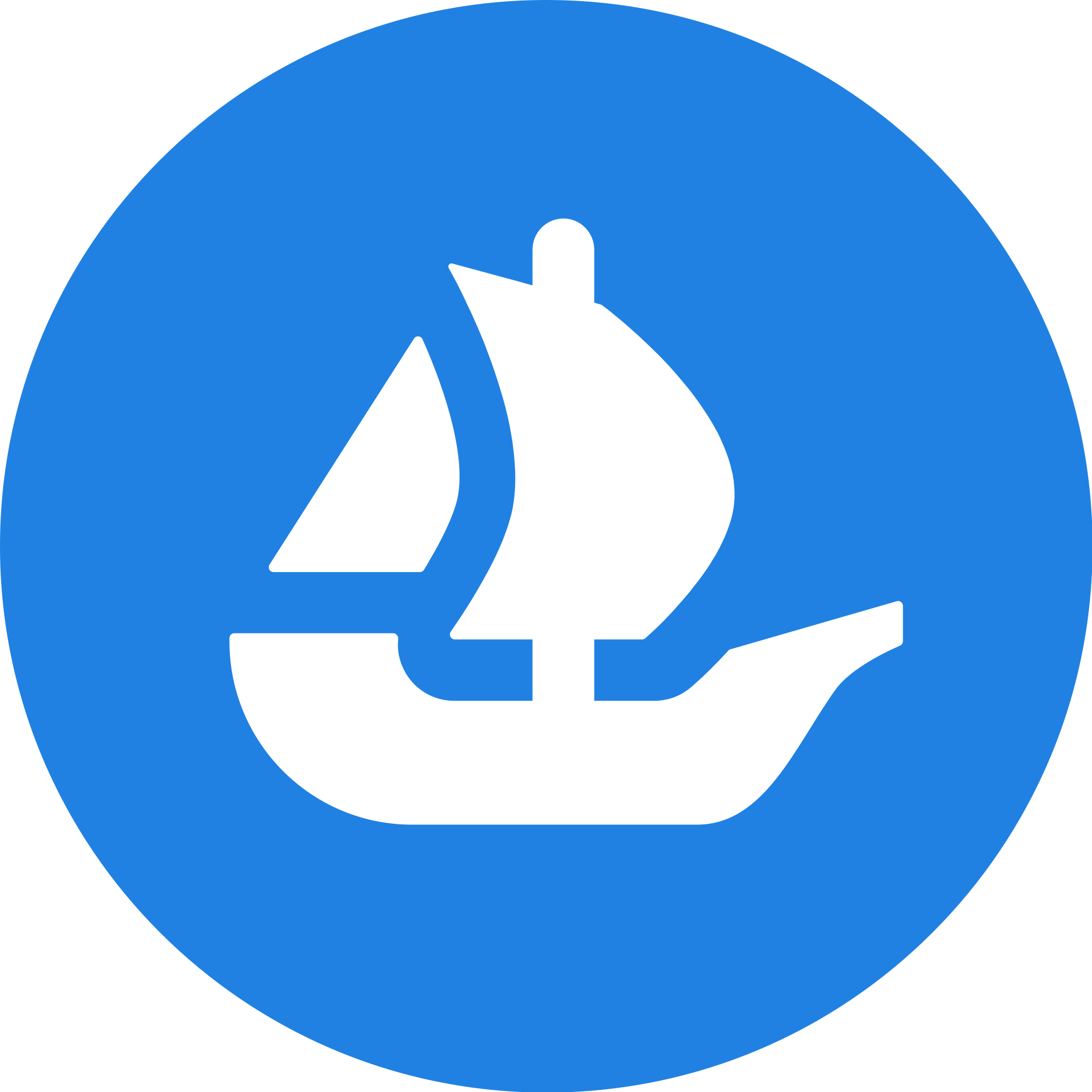

Launching your NFTs on popular platforms like OpenSea provides exposure to a wide range of potential buyers and collectors. This section explores the step-by-step process of launching NFTs on OpenSea and optimizing metadata and images for maximum impact.
Step-by-Step Guide for NFT Launch on OpenSea
Launching NFTs on OpenSea involves a series of steps to ensure a smooth and successful release. Here is a step-by-step guide:
- Set Up Wallet: Begin by setting up a compatible cryptocurrency wallet such as MetaMask or Trust Wallet. Connect your wallet to OpenSea to enable the buying and selling of NFTs.
- Prepare NFT Assets: Create or obtain the digital assets you plan to mint as NFTs. These assets can be artwork, music, videos, or other unique digital items. Ensure your assets meet the required specifications in terms of file format, size, and resolution.
- Minting Process: Access the OpenSea platform and navigate to the “Create” or “Sell” section. Connect your wallet and initiate the minting process. Provide all necessary details, including title, description, attributes, and royalty percentages.
- Upload Metadata and Images: Upload metadata files, including a JSON file that contains information about your NFT, such as title, description, image links, and additional attributes. Optimize the metadata to enhance searchability and discoverability.
- Set Pricing and Royalties: Determine the pricing for your NFTs, considering factors such as rarity, demand, and market trends. You can choose between fixed prices or auctions. Specify the royalty percentage you wish to receive for secondary sales.
- Review and Confirm: Review all the information and settings for your NFTs, ensuring accuracy and consistency. Once satisfied, confirm the listing, and proceed to mint your NFTs on the blockchain.
- Gas Fees and Transactions: Pay attention to gas fees, which cover the cost of blockchain transactions. Gas fees can fluctuate depending on network congestion, so consider the most appropriate time for your NFT launch.
- Promotion and Marketing: After minting your NFTs, promote them through various channels. Leverage social media, email marketing, and partnerships to create awareness and attract potential buyers. Engage with your community and share the story behind your NFTs to enhance their appeal.
- Interact with Buyers: Respond to inquiries, engage with potential buyers, and provide any additional information or clarification they may need. Building relationships and offering exceptional customer service can foster trust and boost sales.
- Secondary Market Monitoring: Keep an eye on the secondary market activity for your NFTs on OpenSea. Monitor sales, royalties earned, and any potential resale opportunities.
By following this step-by-step guide, you can successfully launch your NFTs on platforms like OpenSea and maximize their visibility and potential for sales.
Optimizing Metadata and Images for NFTs
Optimizing metadata and images is crucial for enhancing the discoverability and appeal of your NFTs on platforms like OpenSea. Consider the following tips:
- Metadata Optimization: Craft compelling titles and descriptions that accurately represent your NFTs. Include relevant keywords and attributes to improve searchability. Use concise and engaging language to captivate potential buyers and provide a clear understanding of the value your NFTs offer.
- Image Quality: Ensure your images are of high quality and visually appealing. Optimize the resolution, aspect ratio, and file format to ensure optimal display on different devices. Attention-grabbing visuals can significantly impact potential buyers’ interest and engagement.
- Unique and Consistent Branding: Develop a unique visual branding for your NFTs to establish a recognizable presence. Consistent branding across your NFTs helps create a cohesive collection and builds a stronger brand identity.
- Verified Profiles and Provenance: Establish trust and authenticity by verifying your profile and providing proof of ownership or provenance. Verification adds credibility to your NFTs and increases buyer confidence.
- Metadata Standards: Adhere to metadata standards and conventions to ensure compatibility and smooth integration with NFT marketplaces. Follow OpenSea’s guidelines and recommendations to optimize metadata formatting and structure.
- SEO Considerations: Apply basic search engine optimization (SEO) principles to your metadata and image descriptions. Include relevant keywords, but avoid excessive keyword stuffing. This can improve your NFTs’ visibility in search results within the OpenSea marketplace and even on external search engines.
By optimizing metadata and images, you enhance the discoverability, appeal, and credibility of your NFTs on platforms like OpenSea. Implementing these best practices increases the likelihood of attracting potential buyers and maximizing the value of your digital assets.
Post-Launch Promotion and Marketing
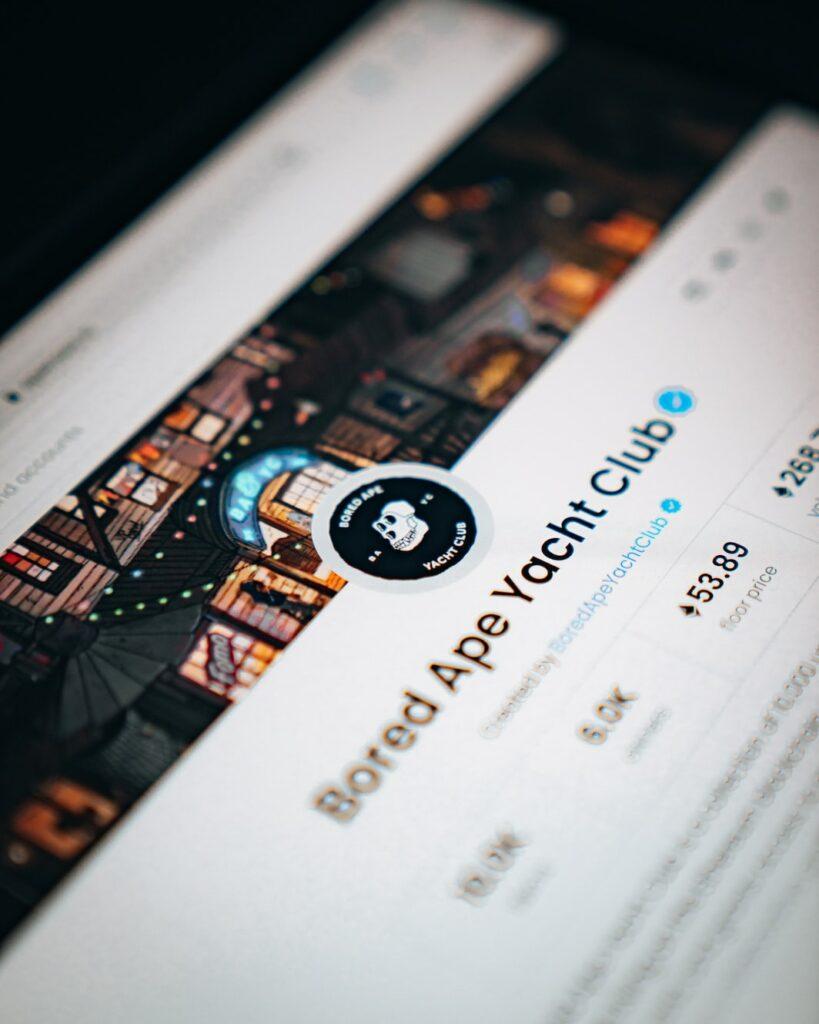

The launch of your NFTs is just the beginning of your journey. Post-launch promotion and marketing efforts are vital for maintaining momentum, driving sales, and expanding your audience. This section explores various strategies to effectively promote and market your NFTs after the initial launch.
Continuous Social Media Marketing for NFTs
Social media continues to be a powerful tool for promoting and marketing NFTs post-launch. To effectively utilize social media for NFT marketing, consider the following strategies:
- Develop a consistent social media marketing strategy to engage your audience, build brand awareness, and drive sales.
- Share regular updates about your NFTs, including behind-the-scenes content, artist insights, and upcoming releases.
- Leverage the power of visual storytelling through captivating visuals, videos, and GIFs to captivate your followers.
1. Interact with your audience by:
- Responding to comments, DMs, and inquiries promptly.
- Hosting live Q&A sessions, giveaways, or contests to foster engagement and reward your community.
- Collaborating with influencers or partnering with other NFT creators to amplify your reach and tap into new audiences.
2. Implement targeted social media advertising campaigns:
- Reach specific demographics, interests, or communities relevant to your NFTs.
- Utilize platforms like Twitter, Instagram, Discord, and TikTok to connect with NFT enthusiasts and engage in relevant conversations.
3. Monitor analytics:
- Track the performance of your social media campaigns.
- Adapt your strategy based on the insights gained from analytics.
By utilizing these strategies, you can effectively leverage social media to promote and market your NFTs, engage with your audience, and drive sales post-launch.
Leveraging NFT News Sites and Communities
NFT news sites and online communities serve as valuable platforms to promote your NFTs and connect with a targeted audience of collectors and enthusiasts. To effectively utilize these platforms, consider the following strategies:
1. Identify Relevant Platforms:
- Research reputable NFT-focused news sites, blogs, forums, and communities that align with your niche or artistic style.
- Look for platforms with an engaged audience and active discussions related to NFTs.
2. Engage and Share Updates:
- Actively participate in these platforms by sharing updates, press releases, or artist interviews about your NFTs.
- Share valuable insights and contribute to discussions, establishing yourself as a trusted member of the community.
- Follow community guidelines when showcasing your NFTs and offering advice or experiences.
3. Collaborate and Organize Events:
- Collaborate with community moderators or influencers to organize Ask Me Anything (AMA) sessions, virtual events, or joint marketing initiatives.
- These collaborations can help increase visibility, engage the community, and foster partnerships within the NFT space.
4. Submit to Curated NFT Marketplaces:
- Consider submitting your NFTs to curated NFT marketplaces or collections featured on platforms like Foundation, SuperRare, or Rarible.
- These platforms often have dedicated communities and attract collectors actively seeking new and unique NFTs.
- Submitting your NFTs to these curated platforms can provide additional exposure and increase the chances of reaching potential buyers.
5. Networking and Building Relationships:
- Take advantage of these platforms to network and build relationships with fellow artists and collectors.
- Share insights, provide feedback, and engage in meaningful discussions.
- Collaborations or cross-promotions with other artists or collectors in the community can help expand your reach and attract new audiences.
By leveraging NFT news sites and online communities, you can tap into a targeted audience of collectors and enthusiasts. Engaging with these platforms, sharing updates, and collaborating with community members can help generate interest, visibility, and potential sales for your NFTs. Additionally, submitting your NFTs to curated marketplaces can further enhance exposure and reach within the NFT community.
Exploring Unique Promotion Opportunities
To stand out in the competitive NFT market, explore unique promotion opportunities that align with your brand and target audience. Consider the following strategies:
- Collaborative Drops: Collaborate with other NFT artists or brands to create special collaborative NFT drops. This cross-promotion can introduce your NFTs to a new audience and expand your reach.
- Physical-Digital Crossovers: Explore opportunities to bridge the digital and physical worlds. For example, offer limited physical merchandise or exclusive experiences tied to your NFTs. This adds value and creates unique offerings for collectors.
- Virtual Exhibitions and Events: Host virtual exhibitions or events where collectors can explore your NFT collection in a curated and immersive environment. Partner with platforms or organizations that specialize in virtual exhibitions to enhance the experience.
- Charity and Social Impact: Consider donating a portion of the proceeds from your NFT sales to a charitable cause or supporting social impact initiatives. This can attract socially conscious buyers and generate positive PR for your NFTs.
- NFT Market and Platform Promotions: Stay updated on promotional opportunities offered by NFT marketplaces and platforms. Some platforms feature NFT collections or highlight specific artists, offering exposure and increased visibility for your NFTs.
Continuously assess the performance of your post-launch promotion and marketing strategies. Monitor engagement metrics, sales data, and feedback from your community to refine and optimize your approach. By staying proactive and exploring unique opportunities, you can sustain the success of your NFTs post-launch and continue to capture the attention of collectors and enthusiasts.
Evaluating NFT Marketing Success and Adjusting Strategies
In the rapidly evolving world of Non-Fungible Tokens (NFTs), effective marketing strategies are crucial. This section will explore the importance of evaluating NFT marketing success and adjusting strategies accordingly. It covers key performance indicators, essential tools for evaluation, result analysis, strategic adjustments, and the necessity of continuous monitoring and optimization.
Use it as a guide that provides a roadmap for maximizing NFT marketing success in this dynamic market, ensuring your efforts are data-driven, targeted, and responsive to market trends and consumer behavior.
The Imperative of Evaluation


The evaluation of your Non-Fungible Token (NFT) marketing strategy is a critical component in the overall success of your campaign. This process allows you to:
- Quantify the Return on Investment (ROI): By evaluating your marketing efforts, you can calculate the ROI, which is a direct measure of the effectiveness of your marketing activities. It helps you understand if the money you’re investing in marketing is generating a profitable return.
- Understand Your Audience: Evaluation helps you gain insights into your target audience’s behavior and preferences. It allows you to understand what resonates with them, what doesn’t, and why. This understanding is crucial in tailoring your marketing efforts to meet their needs and preferences.
- Identify Strengths and Weaknesses: Through evaluation, you can identify what aspects of your marketing strategy are working well and what areas need improvement. This knowledge allows you to leverage your strengths and address your weaknesses, thereby enhancing the overall effectiveness of your marketing efforts.
- Make Data-Driven Decisions: Evaluation provides you with data and insights that can guide your decision-making process. It enables you to make informed decisions about your marketing strategy, ensuring that your future campaigns are based on data and not just intuition or guesswork.
Key Performance Indicators (KPIs) for NFT Marketing
To effectively evaluate your NFT marketing strategy, you need to track specific Key Performance Indicators (KPIs). These are measurable values that demonstrate how effectively your company is achieving its business objectives. Here are some KPIs you should consider:
- Sales Metrics: These include the number of NFTs sold, the revenue generated, the average transaction value, and the volume of secondary market sales. These metrics provide a direct measure of your sales performance and the financial success of your NFT marketing efforts.
- Engagement Metrics: These include website traffic, page views, bounce rate, average session duration, and actions taken on your website or NFT platform. These metrics provide insights into how users are interacting with your digital properties and the level of engagement your marketing efforts are generating.
- Social Media Metrics: These include the number of followers, likes, shares, comments, and mentions on social media platforms. These metrics provide insights into your social media performance and the level of engagement and interaction on your social media posts.
- Customer Metrics: These include the number of new customers acquired, the customer retention rate, the customer lifetime value, and customer satisfaction scores. These metrics provide insights into your customer base, their loyalty, their value to your business, and their satisfaction with your NFT offerings.
- Brand Awareness Metrics: These include brand recall, brand recognition, and the volume of searches for your brand. These metrics provide insights into how well your target audience knows your brand and how visible your brand is in the market.
Tools for Evaluating NFT Marketing Success
There are several tools available that can help you evaluate your NFT marketing success. These tools provide you with the data and insights you need to understand your performance and make informed decisions. Some of these tools include:
- Google Analytics: This is a powerful tool that provides insights into your website traffic, user behavior, and conversion rates. It allows you to track a wide range of metrics, including the number of visitors, the pages they visit, the time they spend on your site, and the actions they take.
- Social Media Analytics: Most social media platforms provide analytics tools that offer valuable data about your social media performance. Tools like Facebook Insights, Twitter Analytics, and Instagram Insights can provide you with data on your followers, their engagement with your posts, and the reach and impressions of your posts.
- NFT Analytics Platforms: There are several platforms, like NonFungible.com and DappRadar, that provide insights into NFT transactions, trends, and market data. These platforms can help you understand the overall market dynamics and the performance of your NFTs in the market.
- Customer Feedback Tools: Tools like SurveyMonkey and Google Forms can help you gather customer feedback and measure customer satisfaction. These tools allow you to conduct surveys, collect feedback, and analyze the data to gain insights into your customers’ perceptions and experiences.
Analyzing the Results
Once you have collected the data, the next step is to analyze the results. This process involves comparing your performance against your goals and benchmarks, identifying trends, and drawing insights from the data. Here are some steps to guide you:
- Compare Against Goals: The first step in the analysis process is to review your KPIs and compare them against your objectives. This comparison will help you understand if you have met, exceeded, or fallen short of your goals. It provides a clear picture of your performance and the effectiveness of your marketing efforts.
- Identify Trends: Look for patterns and trends in your data. Are there certain types of NFTs that perform better than others? Are there specific marketing tactics that drive more engagement or conversions? Identifying these trends can provide valuable insights that can guide your future marketing efforts.
- Segment Analysis: Break down your data by segments such as customer demographics, behavior, and purchase history. This segmentation can provide deeper insights into your performance and help you understand how different segments of your audience are responding to your marketing efforts.
- Competitor Analysis: Compare your performance against your competitors. This comparison can help you understand where you stand in the market and identify areas where you can improve or opportunities you can leverage.
Adjusting Your NFT Marketing Strategy
Based on your evaluation, you may need to adjust your NFT marketing strategy. This could involve refining your target audience, tweaking your marketing tactics, or redefining your goals. Here are some strategies for adjusting your NFT marketing strategy:
- Refine Your Target Audience: If your NFTs are not resonating with your current audience, you may need to refine your target audience. This could involve targeting a different demographic, focusing on a specific niche, or expanding your audience to include new segments.
- Tweak Your Marketing Tactics: If certain marketing tactics are not delivering the desired results, consider tweaking them. This could involve experimenting with different types of content, trying new marketing channels, or adjusting your messaging to better resonate with your audience.
- Redefine Your Goals: If your goals are not aligned with your performance, you may need to redefine them. Make sure your goals are specific, measurable, achievable, relevant, and time-bound (SMART). This will ensure that your goals are clear, realistic, and aligned with your business objectives.
- Optimize Your Pricing Strategy: If your NFTs are not selling as expected, consider optimizing your pricing strategy. This could involve lowering your prices, offering discounts, or introducing dynamic pricing based on demand and market conditions.
- Improve Your NFT Offerings: If your NFTs are not attracting buyers, consider improving your offerings. This could involve enhancing the quality of your NFTs, offering additional benefits, or creating more exclusive NFTs.
Continuous Monitoring and Optimization
Evaluating your NFT marketing success and adjusting your strategies should be an ongoing process. The NFT market is dynamic and rapidly evolving, so you need to continuously monitor your performance and optimize your strategies. Here are some strategies for continuous monitoring and optimization:
- Set Up Regular Reporting: Establish a regular reporting schedule to review your KPIs. This could be weekly, monthly, or quarterly, depending on your needs. Regular reporting ensures that you stay updated on your performance and can quickly identify and address any issues or opportunities.
- Use Real-Time Analytics: Leverage real-time analytics to monitor your performance and make immediate adjustments when necessary. Real-time analytics provide you with up-to-the-minute data, allowing you to respond quickly to changes in performance or market conditions.
- Conduct Regular Market Research: Stay updated with the latest market trends and consumer behavior. Regular market research can help you anticipate changes in the market, understand emerging trends, and adapt your strategy accordingly.
- Test and Experiment: Continuously test and experiment with different strategies. This can help you discover what works best and keep your marketing efforts fresh and effective. Experimentation allows you to try out new ideas, learn from your successes and failures, and continuously improve your marketing strategy.
- Solicit Customer Feedback: Regularly solicit feedback from your customers. This can provide valuable insights into what they like, what they don’t like, and what they want to see more of. Customer feedback can guide your product development, marketing strategies, and customer service efforts.
Evaluating NFT marketing success and adjusting strategies is a critical process that can significantly impact the effectiveness of your marketing efforts. By setting clear KPIs, using the right tools, analyzing the results, making necessary adjustments, and continuously monitoring and optimizing, you can maximize your NFT marketing success and stay ahead in the dynamic NFT market.
NFT Trends to Watch


As the non-fungible token market has been growing rapidly over the past few years, showing no signs of slowing down. As it continues to evolve, several trends are emerging that are expected to shape the landscape in 2023 beyond. Let’s explore the most relevant.
Artificial Intelligence in NFTs
AI is a rapidly growing trend in the digital art world. AI algorithms are being used to create unique, one-of-a-kind digital artwork and animations that are then tokenized as NFTs. These AI-generated art pieces are highly sought after for their novelty and unpredictability. Their value is often determined by the algorithm’s level of creativity.
As AI continues to advance, the possibilities for AI-generated NFTs are endless, making it an exciting trend to watch in the world of NFTs and digital art.
Tokenization in Gaming
The integration of NFTs in gaming is a trend to watch in 2023. Blockchain technology allows players to buy virtual assets in the form of NFTs in games such as Axie Infinity. This metaverse-style game lets players collect, train, and battle tokenized creatures stored on the Ethereum blockchain.
To play, users buy Axie NFTs in-game. Owners can earn real money by winning battles. Due to COVID-19, the game gained popularity and became a main source of income for some in the Philippines. It now has 2.8M players and billions in sales.
The Emergence of NFT-Powered Social Networks
NFT-based social networks use blockchain and NFTs for user data ownership and monetization. They offer better user connections and transparency, challenging traditional social media platforms.
Web 3.0 and NFTs
The next generation of the internet incorporates blockchain technology to provide individuals with greater control over their personal data and intellectual property. This allows for asset ownership, monetization and rewards through NFTs. Unlike the primarily content-focused Web2, Web 3.0 is poised to transform the way brands operate in the digital space.
Decentralized Autonomous Organizations (DAO) and NFTs
There is an expected increase in investment in DAOs as they attract more resources than other firms and individuals. They also enable wider access to exclusive NFT investments. The rise of DAOs is a top trend in the NFT market for 2023, promoting democratization.
Decentralized Finance
Financial assets will be tokenized using NFTs. This includes stocks and bonds, which will allow for fractional ownership and making investments more accessible to a wider range of people.
NFT-powered Art Marketplaces
NFTs will continue to revolutionize the art world, making it easier for artists to sell and showcase their work to a global audience while also providing buyers with a secure and verifiable way to purchase and own unique pieces of digital art.
The Metaverse and NFTs
Non-fungible tokens are the core of the metaverse. As such, it is among the leading trends in 2023 and the future. Cryptocurrencies and blockchain technology are expected to break down barriers to entry into the metaverse,which is a universe of interconnected virtual worlds. NFTs allow individuals to purchase or create permanent items, further enhancing their metaverse experience.
Final Thoughts on NFT Marketing
The digital era has ushered in a new frontier in marketing with the advent of Non-Fungible Tokens (NFTs). The unique characteristics of NFTs, such as scarcity, exclusivity, and the ability to authenticate digital assets, have opened up innovative avenues for marketers to connect with audiences, build brand loyalty, and explore new revenue streams.
As we move forward, it’s crucial for businesses and individuals to stay informed about emerging trends, adapt to changes, and leverage the potential of NFTs to create meaningful connections and experiences for their audience. The future of marketing lies in the ability to blend traditional strategies with innovative technologies like NFTs to resonate with the digital-first consumers of today.
Frequently Asked Questions on NFT Marketing
How can NFTs be used for marketing purposes?
NFTs can be used for marketing purposes in several ways. They can be used to create limited-edition digital assets related to a brand, such as artwork, music, or virtual items. Brands can also collaborate with artists or influencers to create branded NFTs, offering unique experiences, access, or rewards to their audiences.
Which platforms can I use for NFT marketing?
There are several popular platforms for NFT marketing, including Ethereum-based marketplaces like OpenSea, Rarible, and SuperRare. Other platforms like Flow (used by NBA Top Shot) and Binance Smart Chain also support NFTs. Choose a platform based on your target audience, the type of NFTs you want to create, and the platform’s user base and features.
How can NFTs help with brand engagement?
NFTs can enhance brand engagement by offering unique and exclusive digital assets that create a sense of scarcity and collectibility. Brands can organize contests, giveaways, or auctions for NFTs, allowing fans and customers to interact with the brand in new and exciting ways. NFTs can also enable social sharing and peer-to-peer trading, further amplifying brand exposure.
Are NFTs only suitable for creative industries?
While NFTs gained initial popularity in the art and creative industries, they can be utilized by businesses in various sectors. NFTs can represent virtual goods, tickets, licenses, or even ownership of physical assets. Any brand with a digital presence can explore NFT marketing strategies to engage their audience and create additional revenue streams.
How can NFT marketing generate revenue?
NFT marketing earns revenue by selling directly to collectors, with royalties from resales and offering premium experiences for extra income.
Are there any risks or challenges associated with NFT marketing?
NFT marketing has risks: market volatility and fluctuating values, environmental concerns, legal uncertainties. Thorough research, market understanding, and expert advice are crucial.
How can I promote and market my NFTs effectively?
To promote NFTs, use your brand presence, collaborate with artists, engage on social media, utilize email marketing, create visual content, share stories, and offer unique benefits for sales.

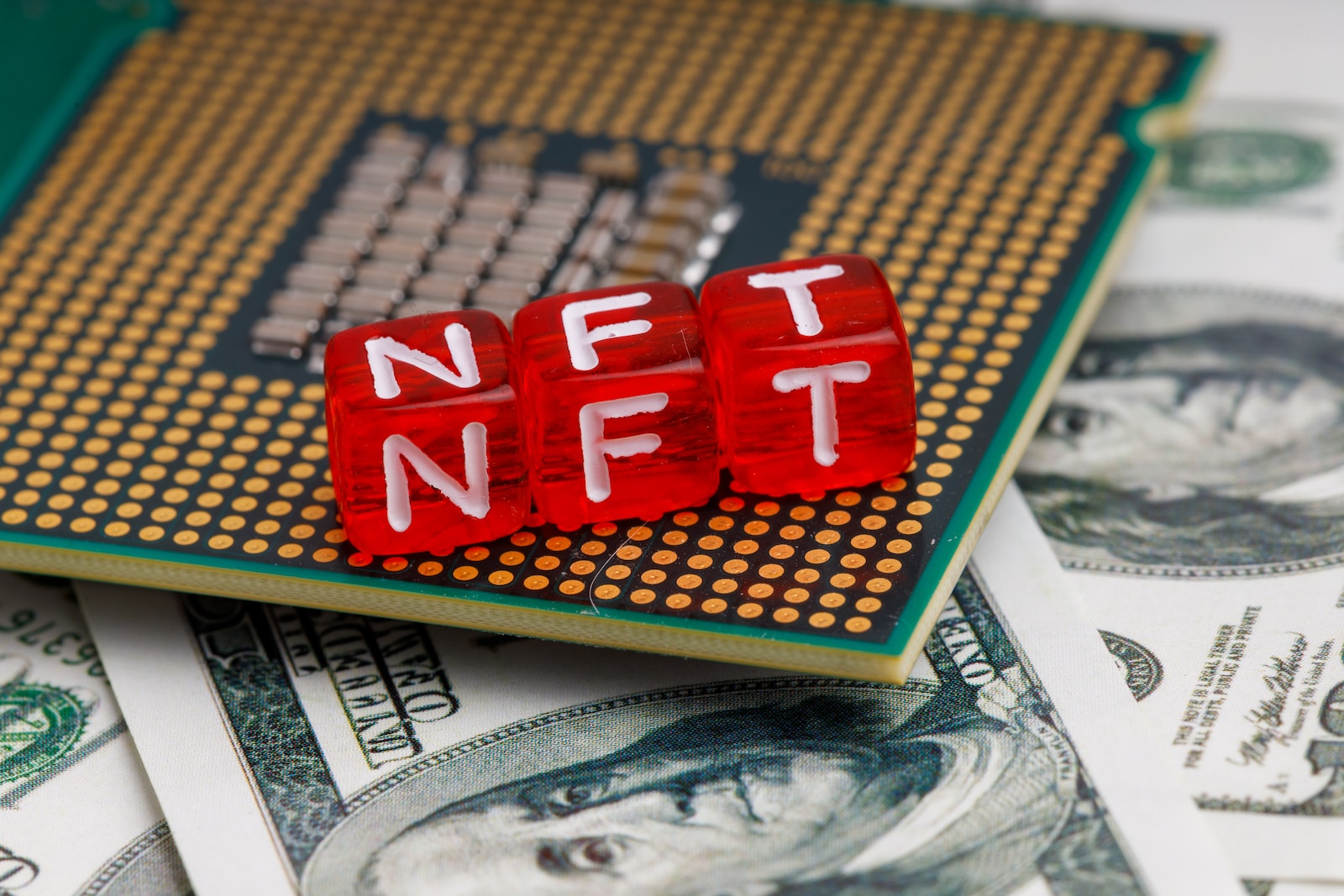



















Leave a Reply
View Comments